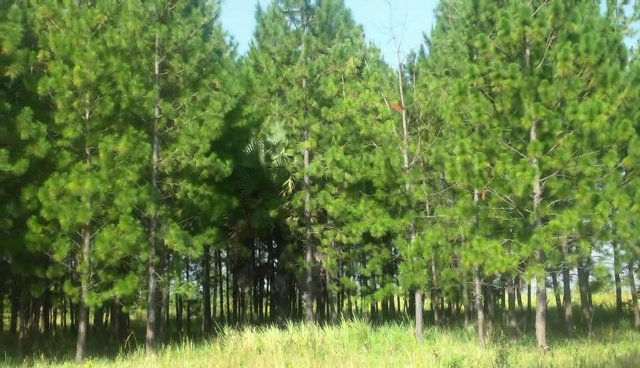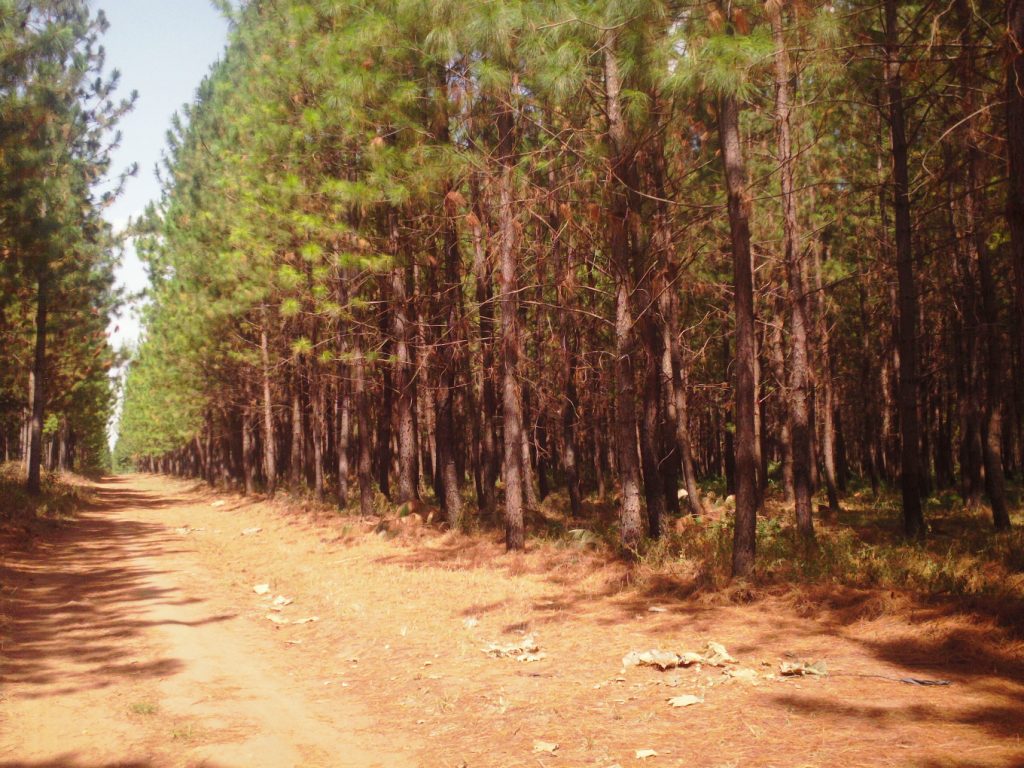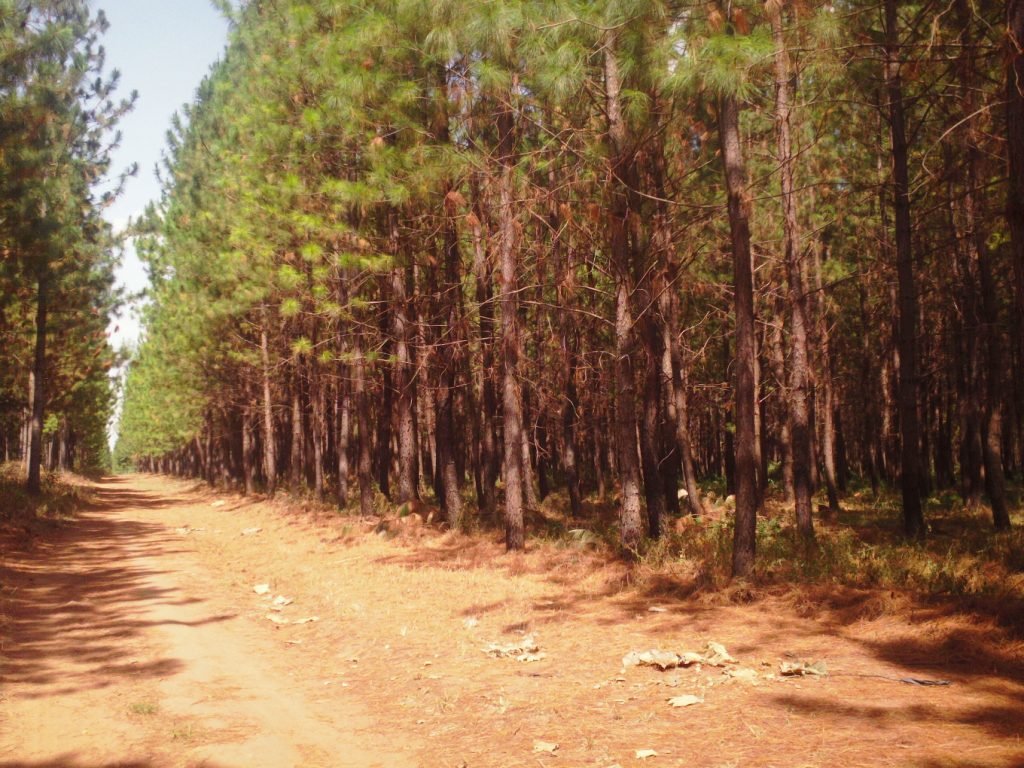WALA Women Group Community Tree planting Approach [Uganda]
- Creation:
- Update:
- Compiler: Kamugisha Rick Nelson
- Editors: JOY TUKAHIRWA, Richard Otto Kawawa, Bernard Fungo
- Reviewers: John Stephen Tenywa, Nicole Harari, Renate Fleiner, Donia Mühlematter
approaches_2767 - Uganda
View sections
Expand all Collapse all1. General information
1.2 Contact details of resource persons and institutions involved in the assessment and documentation of the Approach
Key resource person(s)
land user:
Orach Alice
0782600742
WALA WATEMU LAFAWATE AGROFORESTRY ASSOCIATION
Omolo District
land user:
Orach Alice
Omolo district
Name of project which facilitated the documentation/ evaluation of the Approach (if relevant)
Scaling-up SLM practices by smallholder farmers (IFAD)Name of the institution(s) which facilitated the documentation/ evaluation of the Approach (if relevant)
CDE Centre for Development and Environment (CDE Centre for Development and Environment) - Switzerland1.3 Conditions regarding the use of data documented through WOCAT
When were the data compiled (in the field)?
26/05/2017
The compiler and key resource person(s) accept the conditions regarding the use of data documented through WOCAT:
Yes
1.4 Reference(s) to Questionnaire(s) on SLM Technologies

Pine Woodlot [Uganda]
A Woodlot of Pine (Pinus caribaea) is a fast growing, tolerant tree based plantation established to address land cover depletion, soil fertility loss and soil erosion control.
- Compiler: Kamugisha Rick Nelson
2. Description of the SLM Approach
2.1 Short description of the Approach
A sustainable tree planting group approach involving thirty seven women to serve the most vulnerable community for sustainable development.
2.2 Detailed description of the Approach
Detailed description of the Approach:
WALA community tree planting group is an association of 37 women initiated in 2005 and supported by Small Production Grants Scheme since 2006. The group was linked to Saw log production scheme Grant (SPGS) by National Forestry Authority (NFA) who have supported 37 women with tree seedlings, forest tools which include lining out ropes and cross head, pruning saws, thinning ropes, paint and paint brushes and tape measure to support tree planting. WALA, SPGS with partners first developed guidelines (constitution) spelling out the how to establish, manage tree plantations including marketing products for value addition which highlights that : (1) Prospective beneficiaries must be organised community groups or organizations of minimum of 37 members with a leadership committee (2) Should be located within the same Local Council 1 or village (3) Each member should own up a 0.20 ha and max 4 ha dedicated to tree planting, (4) Group must submit a letter expressing interest to access support for tree seedlings to the SPGS project manager with a copied to Food Agricultural Organization Representative in Uganda (5) A list of members with each member seedlings requirements per year must be endorsed by Local council 1 Chairman where proof of ownership of land may be attached with a legal entity with copies of legal documents attached and (6) The community should have willingness and ability to maintain the guidelines: https://www.yumpu.com/en/document/view/37755510/spgs-tree-planting-guidelines-for-Uganda-all-chapters-low. The executive committee organise community plantation planning meetings, trainings and exchange visits to empower them to mobilize resources for environmental conservation . Up to now the group has received 170,000 seedlings, 10 acres of land, 30 hoes and spades, 100 Lining up ropes (2) cross head (2) pruning saws (15) Paint (5 litre) Paint brushes (10) and Tape Measure (1) received by the group kept by the group treasurer. Benefits linked to this approach include presence of the leadership committee supported by the constitution to guide the group activities on site trainings, farmer-to-farmer learning, demonstration plots, access to information and decision support on commercial forest plantation establishment; sale of products as well as environmental services has enabled the group to extend its networks and partnerships beyond SPGS
2.3 Photos of the Approach
2.4 Videos of the Approach
Comments, short description:
WALA community tree planting Approach.
Date:
26/05/2017
Location:
Nwoya District
Name of videographer:
Issa Aliga
2.5 Country/ region/ locations where the Approach has been applied
Country:
Uganda
Region/ State/ Province:
Northern Region,Uganda
Comments:
2.76556, 32.36583
Map
×2.6 Dates of initiation and termination of the Approach
Indicate year of initiation:
2005
If precise year is not known, indicate approximate date when the Approach was initiated:
10-50 years ago
Comments:
Hired land from NFA for 49 years.
2.7 Type of Approach
- project/ programme based
2.8 Main aims/ objectives of the Approach
Environmental conservation through tree planting, improve sawlog production, sustainable land utilization, and income.
2.9 Conditions enabling or hindering implementation of the Technology/ Technologies applied under the Approach
social/ cultural/ religious norms and values
- enabling
Involvement of chiefs and local leaders.
availability/ access to financial resources and services
- enabling
presence of women savings group.
institutional setting
- enabling
Support by SPGS, Uganda Tree growers Association and NFA through seedlings provision, training's.
- hindering
Poor enforcement of bylaws on free grazing.
collaboration/ coordination of actors
- enabling
Presence of memorandum of understanding and presence of other growers.
- hindering
Short term period of collaboration.
legal framework (land tenure, land and water use rights)
- enabling
Land lease and existence of local level bylaws.
- hindering
Poor enforcement with low fines.
policies
- enabling
Formulated using a bottom-top approach.
land governance (decision-making, implementation and enforcement)
- enabling
Presence of bylaws.
- hindering
Poor.
knowledge about SLM, access to technical support
- enabling
Have had training's in SLM.
- hindering
Low adoption outside SPGS supported groups.
markets (to purchase inputs, sell products) and prices
- enabling
Increased demand for tree products (timber).
- hindering
Sell of raw products at low prices.
workload, availability of manpower
- enabling
Trained by SPGS and other collaborators.
- hindering
The groups members are old and those to inherit the group activities are not active.
3. Participation and roles of stakeholders involved
3.1 Stakeholders involved in the Approach and their roles
- local land users/ local communities
Group members, Community
Implementation and use of the approach.
- community-based organizations
Watemu Lapainat Agroforestry Association (WALA), Saving and Credit Organisation ( SACCO).
Savings and Credit training's, loans.
- SLM specialists/ agricultural advisers
Small Production Grants Scheme (SPGS) ,National Forestry Authority (NFA), Uganda Tree Growers Association (UTA)
Research
- researchers
National Forestry Authority students.
Field work and data collection for publication.
- teachers/ school children/ students
University students, primary and secondary teachers.
field work and support training's
- NGO
Food and Agriculture Organisation (FAO), Uganda Timber Growers Association (UTGA)
Support training's.
- local government
Councillors and Forestry officers.
Linkage to NGO's, training's and administrative guidance as well security.
- national government (planners, decision-makers)
National Forestry Authority (NFA).
Planning and Commissioning.
- international organization
Food Agriculture Organisation (FAO).
Funding.
- Cultural leaders
Chiefs and church leaders.
Visits and pray with them.
If several stakeholders were involved, indicate lead agency:
Food and Agricultural Organisation (FAO), National Forestry Authority (NFA)
3.2 Involvement of local land users/ local communities in the different phases of the Approach
| Involvement of local land users/ local communities | Specify who was involved and describe activities | |
|---|---|---|
| initiation/ motivation | passive | Groups members were willing to participate in group activities. |
| planning | passive | Group members planning process- members were not very active at the beginning- Lobbying for land. |
| implementation | interactive | Members participated in planting activities. |
| monitoring/ evaluation | interactive | Members National Forestry Authority (NFA), Small Production Grants Scheme (SPGS) both do joint monitoring with the group members. |
3.4 Decision-making on the selection of SLM Technology/ Technologies
Specify who decided on the selection of the Technology/ Technologies to be implemented:
- all relevant actors, as part of a participatory approach
Explain:
Started by raising seedlings from Action for Development (ACORD) support and then became motivated.
Specify on what basis decisions were made:
- evaluation of well-documented SLM knowledge (evidence-based decision-making)
4. Technical support, capacity building, and knowledge management
4.1 Capacity building/ training
Was training provided to land users/ other stakeholders?
Yes
Specify who was trained:
- land users
If relevant, specify gender, age, status, ethnicity, etc.
Does not have the details
Form of training:
- on-the-job
- farmer-to-farmer
- demonstration areas
- public meetings
Subjects covered:
Saw log production, benefits of tree growing and how to Market logs.
4.2 Advisory service
Do land users have access to an advisory service?
Yes
Specify whether advisory service is provided:
- on land users' fields
Describe/ comments:
It is very useful because it reduces the costs of transport.
The training is hands on and practical.
4.3 Institution strengthening (organizational development)
Have institutions been established or strengthened through the Approach?
- yes, greatly
Specify the level(s) at which institutions have been strengthened or established:
- local
Specify type of support:
- financial
- capacity building/ training
- equipment
- Seedlings
Give further details:
170,000 seedlings, 10 acres of land tools and materials: Lining up ropes (2) cross head (2) prunning saws (15) Paint (5 litre) Paint brushes (10) and Tape Measure (1).
4.4 Monitoring and evaluation
Is monitoring and evaluation part of the Approach?
Yes
Comments:
The monitoring is on going as the group activities are implemented.
If yes, is this documentation intended to be used for monitoring and evaluation?
Yes
Comments:
The findings will be used to know how the group is performing in environmental conservation.
4.5 Research
Was research part of the Approach?
Yes
Specify topics:
- sociology
- economics / marketing
- ecology
- technology
- policy
Give further details and indicate who did the research:
University students, NFA and SPGS.
5. Financing and external material support
5.1 Annual budget for the SLM component of the Approach
If precise annual budget is not known, indicate range:
- < 2,000
Comments (e.g. main sources of funding/ major donors):
FAO, SPGS
5.2 Financial/ material support provided to land users
Did land users receive financial/ material support for implementing the Technology/ Technologies?
Yes
If yes, specify type(s) of support, conditions, and provider(s):
Funds for thinning, Sawlog given to groups by SPGS.
5.3 Subsidies for specific inputs (including labour)
- equipment
| Specify which inputs were subsidised | To which extent | Specify subsidies |
|---|---|---|
| Thinning, saw-pegs , girth tapes | ||
| tools | ||
- agricultural
| Specify which inputs were subsidised | To which extent | Specify subsidies |
|---|---|---|
| Seedlings | fully financed | |
If labour by land users was a substantial input, was it:
- voluntary
5.4 Credit
Was credit provided under the Approach for SLM activities?
Yes
Specify conditions (interest rate, payback, etc.):
In form seedlings and equipment.
Specify credit providers:
NFA.
Specify credit receivers:
SPGS.
5.5 Other incentives or instruments
Were other incentives or instruments used to promote implementation of SLM Technologies?
Yes
If yes, specify:
Formulation and implementation of bylaws.
Training's.
Exchange visits.
6. Impact analysis and concluding statements
6.1 Impacts of the Approach
Did the Approach empower local land users, improve stakeholder participation?
- No
- Yes, little
- Yes, moderately
- Yes, greatly
Capacities to work and make decisions in a group.
Did the Approach enable evidence-based decision-making?
- No
- Yes, little
- Yes, moderately
- Yes, greatly
Decisions made in groups on when to meet, plant, prune and thin.
Did the Approach help land users to implement and maintain SLM Technologies?
- No
- Yes, little
- Yes, moderately
- Yes, greatly
Incentives based (in form of trainings and seedlings).
Did the Approach improve coordination and cost-effective implementation of SLM?
- No
- Yes, little
- Yes, moderately
- Yes, greatly
Coordinated by the leadership committee. Strengthened working as a group.
Did the Approach mobilize/ improve access to financial resources for SLM implementation?
- No
- Yes, little
- Yes, moderately
- Yes, greatly
Transformed them selves into a savings and Credit organisation (SACCO) group.
Did the Approach improve knowledge and capacities of land users to implement SLM?
- No
- Yes, little
- Yes, moderately
- Yes, greatly
Access to technologies (seedlings), knowledge on planting, spacing and pruning and thinning.
Did the Approach improve knowledge and capacities of other stakeholders?
- No
- Yes, little
- Yes, moderately
- Yes, greatly
Especially farmers involved and partner's.
Did the Approach build/ strengthen institutions, collaboration between stakeholders?
- No
- Yes, little
- Yes, moderately
- Yes, greatly
Different partners participated and contributed to implementing the approach. Community bylaws and functioning committee.
Did the Approach mitigate conflicts?
- No
- Yes, little
- Yes, moderately
- Yes, greatly
Conflicts between WALA women group leaders and livestock owners (Free grazing on trees). Conflicts resolved using the group committee.
Did the Approach empower socially and economically disadvantaged groups?
- No
- Yes, little
- Yes, moderately
- Yes, greatly
Focus was not on well off women farmers but those who had interest in tree planting as a group.
Did the Approach improve gender equality and empower women and girls?
- No
- Yes, little
- Yes, moderately
- Yes, greatly
Involved and empowered women who constituted 100% of the group members.
Did the Approach encourage young people/ the next generation of land users to engage in SLM?
- No
- Yes, little
- Yes, moderately
- Yes, greatly
Those who belong to the households where members came from.
Did the Approach improve issues of land tenure/ user rights that hindered implementation of SLM Technologies?
- No
- Yes, little
- Yes, moderately
- Yes, greatly
Focused more on training and production.
Did the Approach lead to improved food security/ improved nutrition?
- No
- Yes, little
- Yes, moderately
- Yes, greatly
Income from the sale of tree products was used for buying food.
Did the Approach improve access to markets?
- No
- Yes, little
- Yes, moderately
- Yes, greatly
Good quality tree products. Linkage done by SPGS.
Did the Approach lead to improved access to water and sanitation?
- No
- Yes, little
- Yes, moderately
- Yes, greatly
Based near the plantation.
Did the Approach improve the capacity of the land users to adapt to climate changes/ extremes and mitigate climate related disasters?
- No
- Yes, little
- Yes, moderately
- Yes, greatly
Carbon sequestration.
especially to seed suppliers and trainers
6.2 Main motivation of land users to implement SLM
- increased production
wood products.
- increased profit(ability), improved cost-benefit-ratio
long term benefits from timber products.
- reduced land degradation
Carbon sink.
- reduced risk of disasters
No hailstorm.
- reduced workload
Yes, the plantation does not require more labourers.
- payments/ subsidies
SPGS support, NFA.
- rules and regulations (fines)/ enforcement
Rules and regulations exist among group members but enforcement is poor.
- prestige, social pressure/ social cohesion
The group is united because of the constitution.
- affiliation to movement/ project/ group/ networks
The group is linked to many organizations (National Agricultural Organisation (NARO), National Forestry Authority, Small Production Grants Scheme (SPGS), Uganda Timber Growers Association (UTGA) which provides support.
- environmental consciousness
Done / participate through training's and workshops organized by partners but also hold their internal reflection meetings.
- enhanced SLM knowledge and skills
Acquired through trainings facilitated by fellow group members and partners.
- conflict mitigation
Normally done through their meetings with the help of the group committee.
6.3 Sustainability of Approach activities
Can the land users sustain what has been implemented through the Approach (without external support)?
- yes
If yes, describe how:
The group is involved in selling thinned trees and the income obtained is used to manage the forest activities like fireline, weeding etc. the presence of an organised leadership. With better management skills to manage, the group will keep working very closely with the group . The presence of the group constitution helps manage the group affairs.
6.4 Strengths/ advantages of the Approach
| Strengths/ advantages/ opportunities in the land user’s view |
|---|
| The approach is inclusive and involves all group members. |
| Income received from the thinned trees is used to facilitate group activities (meetings, workshops, stationery). |
| The approach is appreciated by neighbours who are not members of the group. |
| Strengths/ advantages/ opportunities in the compiler’s or other key resource person’s view |
|---|
| The approach is involving and allows full participation and equal decision making of all stakeholders. |
6.5 Weaknesses/ disadvantages of the Approach and ways of overcoming them
| Weaknesses/ disadvantages/ risks in the land user’s view | How can they be overcome? |
|---|---|
| If not managed well, it can escalate conflicts through encroachment. | Need to put in place bylaws with strict punishments to encroaches. Strengthen bylaws. |
| High costs of chemicals. |
| Weaknesses/ disadvantages/ risks in the compiler’s or other key resource person’s view | How can they be overcome? |
|---|---|
| promoted only by women. | Involve men, youth and PWD's in implementing the approach. |
7. References and links
7.1 Methods/ sources of information
- field visits, field surveys
02
- interviews with land users
02
7.3 Links to relevant information which is available online
Title/ description:
SPGS Tree Planting Guidelines for Uganda
URL:
https://www.yumpu.com/en/document/view/37755510/spgs-tree-planting-guidelines-for-uganda-all-chapters-low-
Links and modules
Expand all Collapse allLinks

Pine Woodlot [Uganda]
A Woodlot of Pine (Pinus caribaea) is a fast growing, tolerant tree based plantation established to address land cover depletion, soil fertility loss and soil erosion control.
- Compiler: Kamugisha Rick Nelson
Modules
No modules




